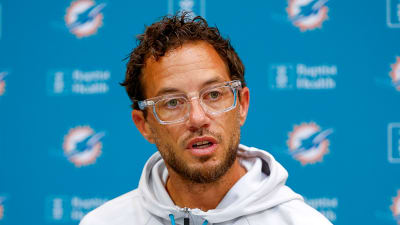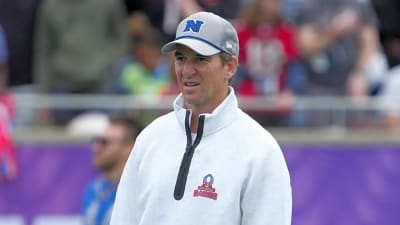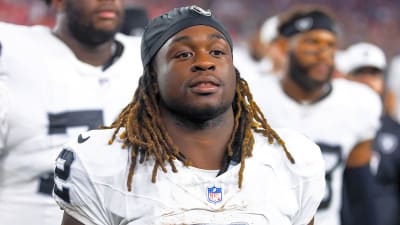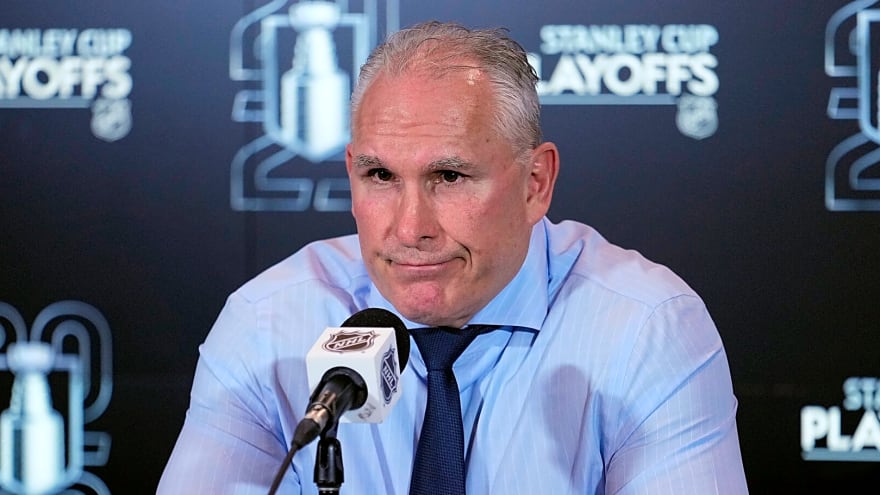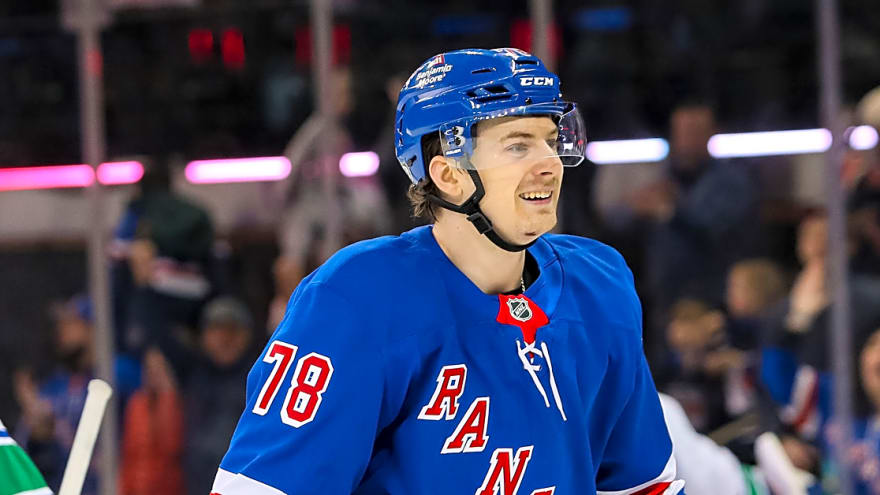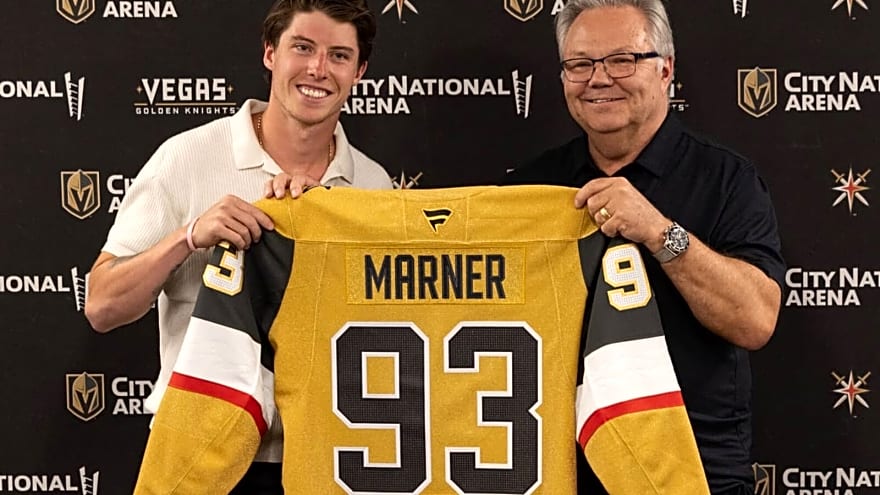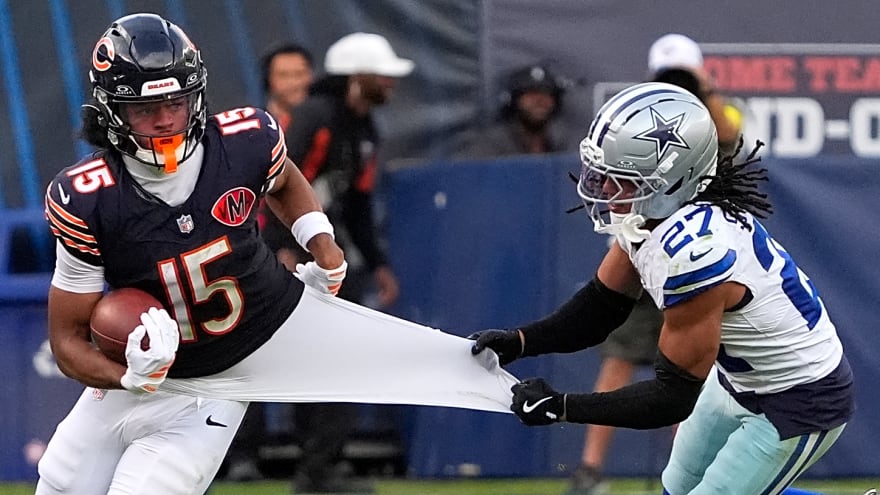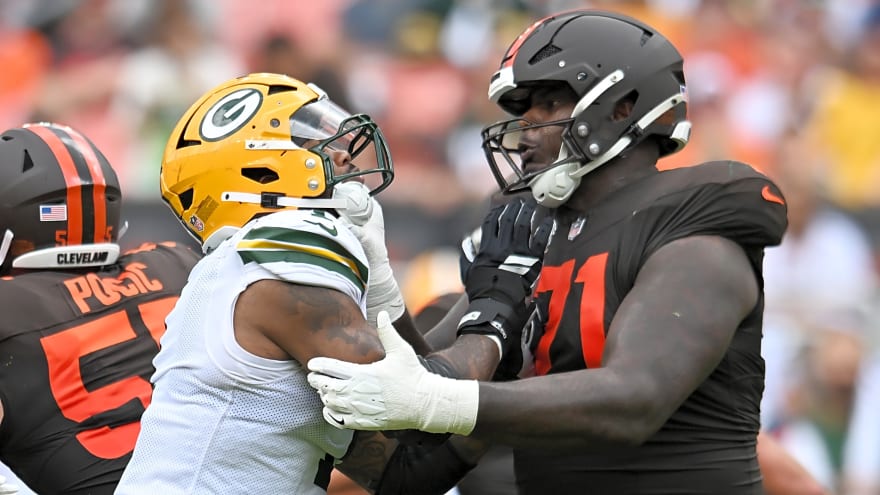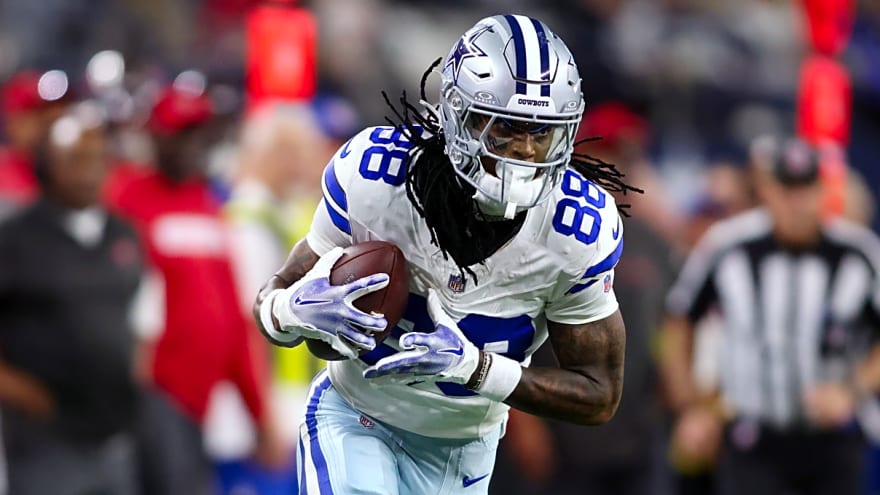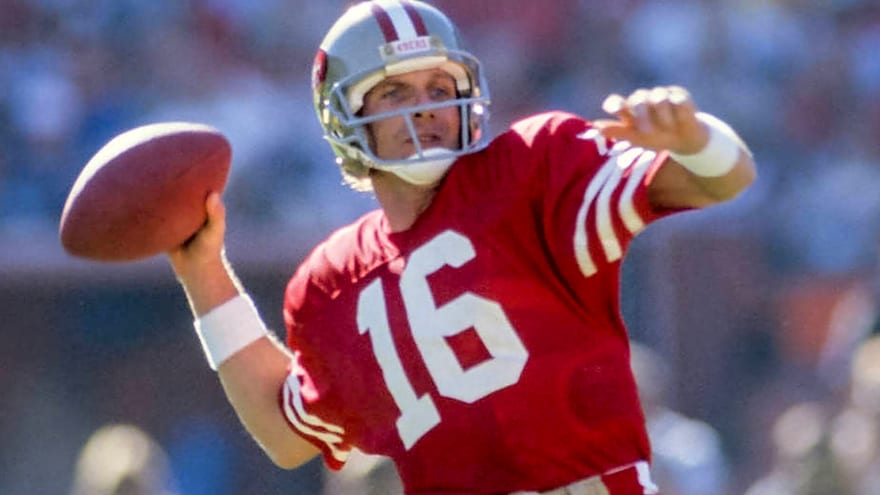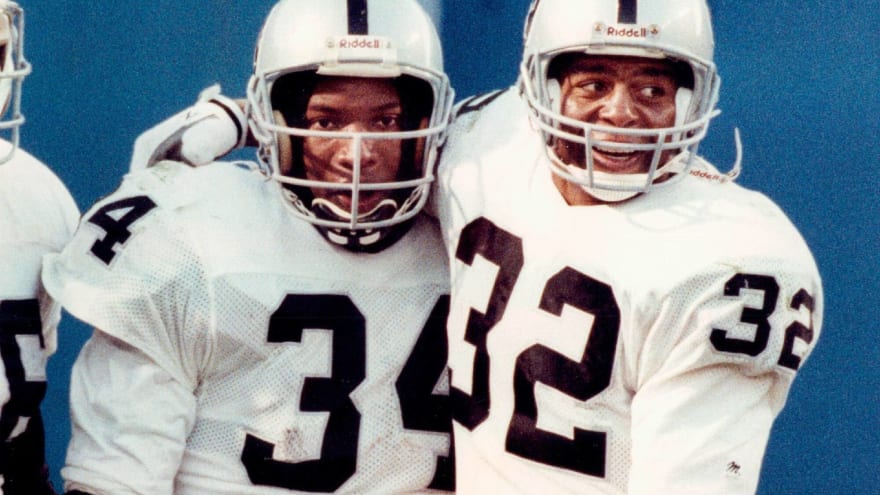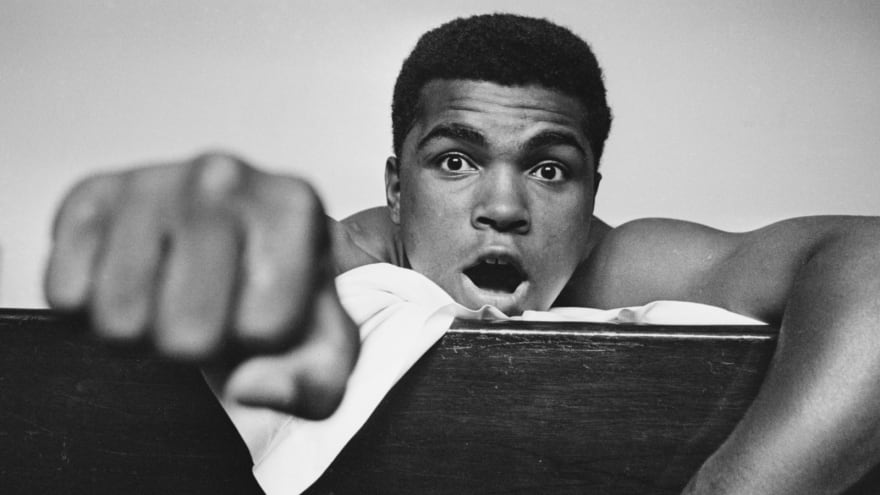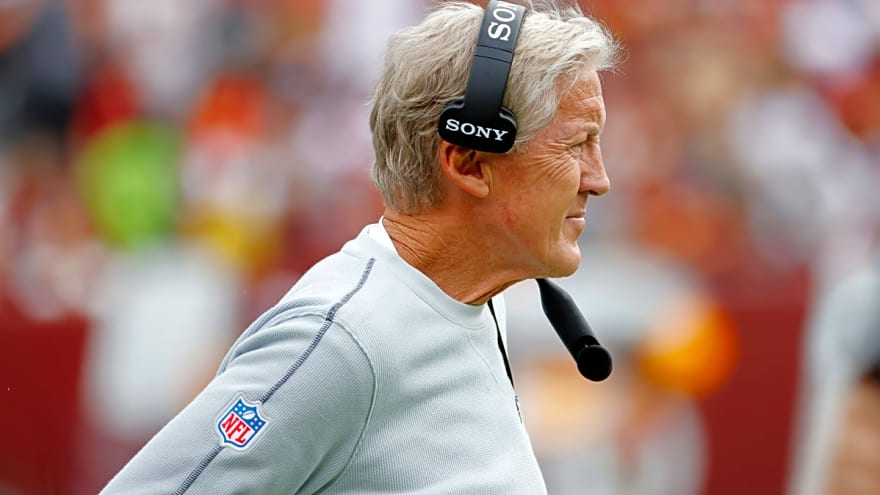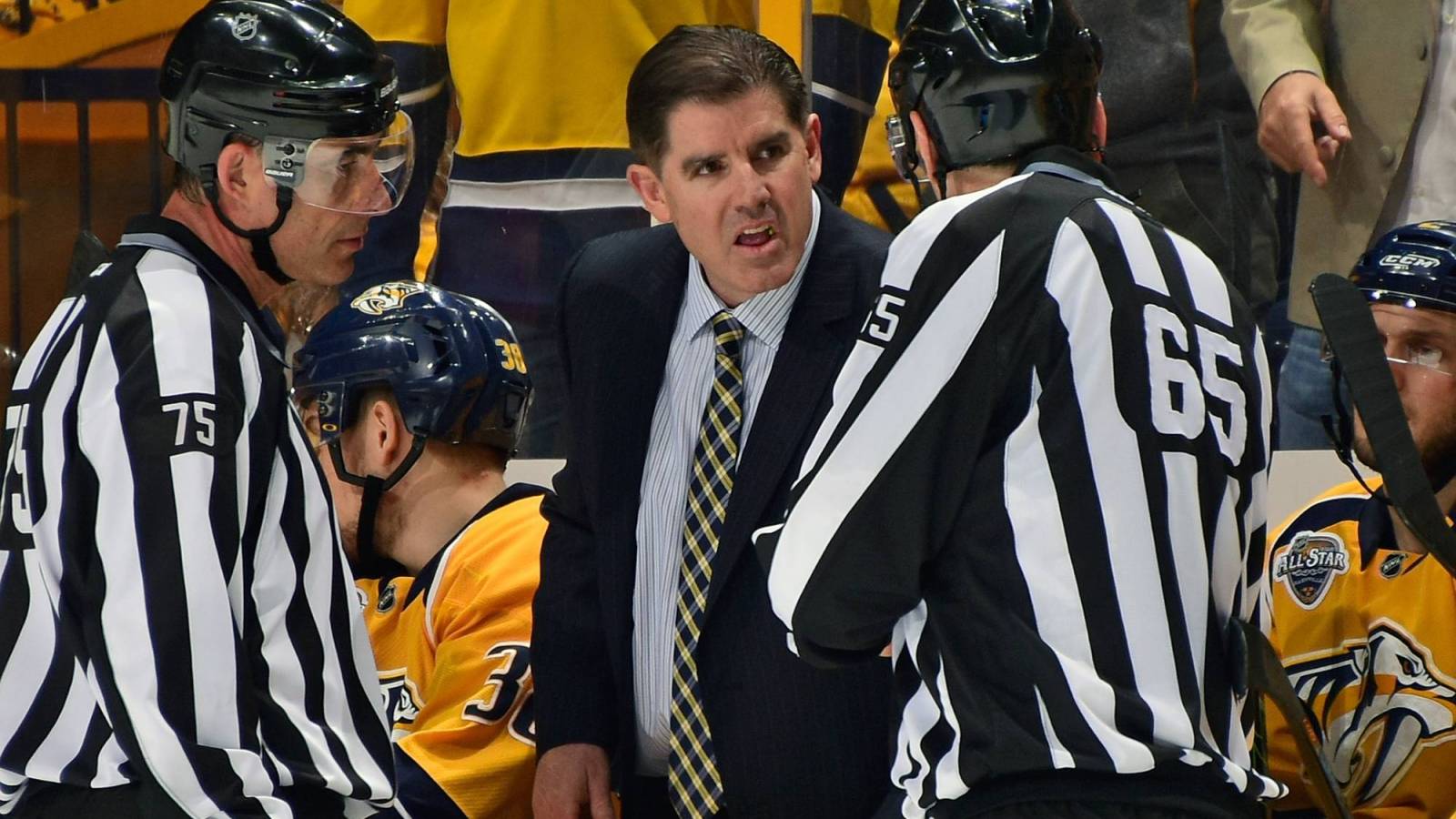
Clarification Please: The NHL's offsides review still a work in progress
Welcome to Clarification Please, an ongoing series in which Yardbarker will take a look at rulings that have players, coaches and fans a bit puzzled. Whether it is regarding old "unwritten rules" or a new subsection IV schedule, these are some rules in which we would like to get more clarification from the leagues.
In its freshman campaign, the NHL’s coaches challenge had plenty of critics, especially when it came to challenging that a play was potentially offsides. Now, about a season-and-a-half after NHL Rule 83.1 could be challenged, there are still some flies in the ointment. While the coaches challenge as a whole has a lot of upside, there still seems to be some mixed feelings when it comes to the offsides review.
"... the game has never been faster, never been more competitive or entertaining… The notion that we call back a goal because there’s a toe over the line – the rule is the rule." - Gary Bettman, NHL Commissioner
Now, if you asked Gary Bettman about it, he would probably tell you the ruling is tops. The Commissioner told reporters during last year’s Stanley Cup Final that “the game has never been faster, never been more competitive or entertaining… The notion that we call back a goal because there’s a toe over the line – the rule is the rule. And I have no doubt if we didn’t get it right that that toe was over the line, there would be a lot of screaming about the fact that we got the call wrong.”
Yet there is still screaming, whether it is from players – see Devan Dubnyk’s candid comments from last March – or from fans watching the game at home. Mike Murphy, NHL vice-president of hockey operations, explained back in October of 2015: "The reason we instituted it was so that we could get the egregious calls particularly right, ones that everybody alive sees and says, 'This is the wrong call, it's a screw-up.'"
But at this point in 2017, the coaches challenge for a play being offsides is still a work in progress – especially when it comes to a team losing their timeout, or how much time the review process is sucking out of games.
The fragility of the challenge process heightens coaches’ concern over the possibility of the team losing their timeout. To refresh: If a coach is successful in challenging a goal, all is well. But if they aren’t, then they lose their timeout. In many circumstances this is a low-risk gamble, challenging the call is just as good as giving your team a breather. But for others it results in a negative momentum shift and the loss of a timeout.
This is something that the Arizona Coyotes dealt with just last week in a tilt against the Minnesota Wild. Coyotes coach Dave Tippett challenged a third period tie-breaking goal by Minnesota’s Nino Niederreiter, saying the Wild were offsides on the play. Tippett told AZ Central after the game: “The look that I had, it was borderline inconclusive… But at the time of the game, you wing it and hopefully you might get a break."
The end result was the league concluding that the goal was good and would not be overturned, therefore forfeiting Arizona’s timeout. The Desert Dogs ended up losing that game 4-3.
The prospect of losing the timeout during a challenge can also change whether or not a coach wants to call a timeout and give their team a chance to regroup, if need be. San Jose Sharks bench boss Peter DeBoer expressed the in-game concern over losing a timeout following a 5-4 loss in early January. In this game – coincidentally also against the Wild – DeBoer thought about calling a timeout in a raucous third period to try to give his team a chance to regroup. DeBoer told the press after the game:
“The momentum swung (to Minnesota) and we didn’t stop it. “On me, I (could) probably think about using a timeout. But at that point you’re wondering if maybe you need one for a challenge at some point. They’ve become so valuable… With the importance of the challenges on goals, it’s hard to use that.”
Momentum is another thing that the offsides challenge is effecting. Even with the addition of those blue line cameras, there is concern from the players and coaches side is that the officials on the ice can’t possibly be making the best call possible when they are watching a review of the play on a tiny tablet. The linesman have to go off watching the replay using TV broadcast footage – which we all know isn’t the best vantage point – and squinting at that screen can take quite a while. Sure, the idea of the challenge is to get another look at these razor thin margins, and the officials want to get those calls right. But there are cases where the difficulty in the process of analyzing these calls is only taking time out of the game.
“Video review is great when it works but sticks out like an angry pimple when it’s clumsy.” - Gary Lawless, The Sports Network
TSN senior correspondent Gary Lawless pointed out exactly this back in October, explaining that “the offsides review is good in theory” but the long wait is an energy-killer. In recalling a game where the review took nine minutes he wrote: “Video review is great when it works but sticks out like an angry pimple when it’s clumsy.”
That, honestly, might be the most concise way to describe the process.
So of course now we ponder where to go from here. What changes could make the offsides review better? Lawless suggested a time limit on the review process – which would cover reviews for both offsides and goalie interference—and that could help the momentum problem. In turn, if the review process is less of a pain and time-suck, perhaps coaches won’t be as concerned with potentially losing their timeout. And the suggestion for the NHL war room to have more say in the review process isn’t a terrible idea, although with the large number of challenges for offsides, that could get a bit chaotic. (Not to forget that the league is looking at the same broadcast footage that the linesman are, so the review process might end up being just as long.) Puck-tracking technology might be the best solution here, although that technology isn’t available yet.
The whole point of offsides review is to catch the egregious calls. But the review process still needs some work so it doesn’t reach egregious levels itself.
More must-reads:
- Clarification Please: Why the rules near the crease need to be fixed
- Clarification Please: The NBA still needs to fix Hack-a-Shaq
- The 'Multiple 30-TD pass NFL seasons' quiz
Breaking News
Trending News
Customize Your Newsletter
 +
+
Get the latest news and rumors, customized to your favorite sports and teams. Emailed daily. Always free!
TODAY'S BEST

Veteran wideout announces retirement from NFL
Mohamed Sanu‘s playing days have officially come to an end. The veteran receiver announced on Friday that he has retired. “After 10+ years in the NFL, my playing chapter is closing,” Sanu wrote on X. “Grateful for every coach, teammate fan. Excited to give back through coaching share the game in a new way with the Facts Over Stats podcast. The Journey continues.” Mohamed Sanu hasn't played in years Sanu last played a regular-season game in 2021, and he very briefly spent time with the Dolphins the following summer. Given the time that has elapsed since Friday’s announcement, it is certainly an unexpected one. Nevertheless, it marks an end to the 36-year-old’s career as a player. Selected in the third round of the 2012 draft, Sanu played out his rookie contract with the Bengals. He established himself as a starting-caliber receiver during that period, a status that remained consistent throughout his Falcons tenure (2016-19). In the 2018 campaign, Sanu set a new personal mark with 838 receiving yards; that season also marked the only time one of his eight career pass attempts (four of which resulted in a touchdown) fell incomplete. After a midseason trade saw him finish the year with the Patriots, the Rutgers product split his time between the 49ers and Lions the following campaign. Sanu saw a downturn in usage and production during that span, and he remained a part-time contributor upon returning to San Francisco for 2021. After being released by the Dolphins in August 2022, no known visits took place, and no further playing opportunities presented themselves. Multiple years removed from his final playing action in the NFL, Sanu will now officially turn his attention to other pursuits. In all, he played 145 combined regular and postseason games and amassed nearly $32M in career earnings.
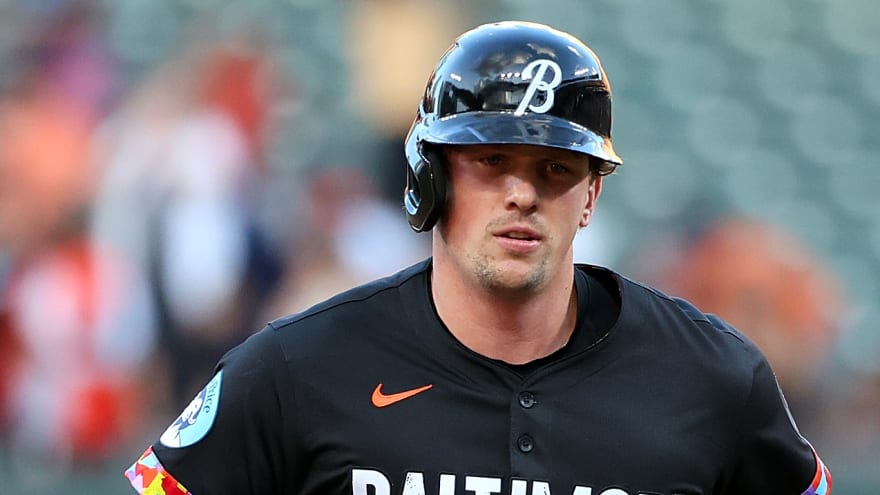
Why did the Orioles activate star player during last week of season?
Ahead of the final six games of the season (all against American League East foes), the Baltimore Orioles have activated catcher Adley Rutschman. The move may have little to do with this season and everything about what the Orioles may do with Rutschman in the offseason. Sidelined with a right oblique strain since Aug. 21 (retroactive to Aug. 18), Rutschman has struggled this season, slashing just .227/.310/.373 with nine homers and 29 RBI. His OPS+ of 92 is the lowest in the four years he has been behind the plate in Baltimore. While the Orioles certainly would like to get the former No. 1 overall pick in the 2019 MLB Draft back behind the plate to finish out the season, this short six-game stint against the Tampa Bay Rays and New York Yankees may also serve as an audition for Rutschman should the Orioles decide to move him in the offseason. Why would the Orioles move on from Rutschman? After playing in just four games, Baltimore signed 21-year-old catcher Samuel Basallo to an eight-year extension worth $67M and could jump up to $88.5M with incentives. The deal means Basallo will be with Baltimore through the 2033 season and has an option to extend that to 2034 as well. With the Orioles investing so much in Basallo, could the 27-year-old Rutschman be on his way out of Charm City? Baltimore could well keep the younger and cost-controlled Basallo behind the plate and use Rutschman as a trade piece this offseason, helping the Orioles rebuild quickly from a season where they will likely finish in the division cellar. With Rutschman coming back, he has the chance to put a positive spin on what has been a disappointing season. If he can show well in the final six games, it could be a great selling point for the Orioles this offseason in any kind of trade talks surrounding him. Orioles are faced with one of two options with Basallo and Rutschman Baltimore interim manager Tony Mansolino has already hinted that Basallo and Rutschman could be in the same lineup together in 2026, emphasizing that Basallo could play first base (a position that could likely be his in 2026 if the Orioles decide to not push Coby Mayo there). Mansolino also added that between first base, catcher and designated hitter, there may be enough at-bats for both Basallo and Rutschman. If that's the case, Baltimore is believing that not only can Basallo play first base at an MLB-level (he has played there in one game so far this season) and Rutschman can bounce back from a down 2025. Baltimore could likely land a nice return package (perhaps centered around pitching) if it decides to trade Rutschman in the offseason, something that MLB insider Bob Nightengale of USA Today believes will happen, writing, "There will be no bigger position player on the trade block this winter than Baltimore Orioles catcher Adley Rutschman." These next six games may not determine much in the standings for the Orioles, but could give a hint about Rutschman's future and what is to come at catcher in 2026.

Waking 'Dancing Bear' could be steal of Bills' 2025 draft haul
When the Buffalo Bills selected Deone Walker in the fourth round, there weren't big expectations for the rookie heading into the 2025 season. Still, many fans wanted the Bills to draft a "big man" and assumed he fit into the 3-technique spot, currently occupied by DaQuan Jones. Walker stands at 6'7" and weighs over 330 pounds. Men that size are typically 3-tech players. Deone Walker is not an average big man Walker is different, though. His quick feet and agility have taken some by surprise. As pointed out by Sal Capaccio, "A man that big shouldn't be able to move that well." Ed Oliver nicknamed Walker the "Dancing Bear". Bills' defensive coordinator Bobby Babich said, "People that are his size shouldn't be able to do some of the things he does." Babich added, "But again, just like T.J., we need some consistency, because if we don't get the dancing bear, all that type of stuff, it doesn't matter." The consistency hasn't been there yet, but Walker has made some plays at points this season, including delivering a game-saving play against the Dolphins, when he shielded Tagovailoa's vision and tipped his pass, which linebacker Terrel Bernard picked off, sealing the win against the Dolphins. On a recent episode of Center Stage with Eric Wood and Josh Reed, Wood commented on Walker, "Well, he looks like a heck of a fourth-round pick, and if he leaves a year earlier, he's likely a first-round draft pick." Added Wood, "Right now, he looks like steal, and he's a guy who started last night with Ed Oliver out." Flashes of greatness and need for consistency "I think at times he's flashed and done a good job rushing the passer. At times he's made some splash plays in the run game as well. Consistency will come as far as him recognizing plays, seeing double teams coming, not getting washed out of his gap", said Wood. Walker fell to the Bills due to a previous back injury he suffered, but so far, that doesn't seem to be an issue. If Walker can hold up physically and start to build the consistency that Wood spoke of, Walker will become a serious part of the Bills' defense as the season progresses and into the playoffs. More Buffalo Bills News: What does Bills' perfect 3-0 start mean for playoffs and beyond Bills' defense under construction but blueprint is promising Bills' defensive woes plus 3 more quick reactions from win over Dolphins 'Comfortable' Elijah Moore shares insight on unique Bills' locker room Hawes Effect: How rookie tight end is reshaping Bills' offensive identity

Cowboys rookie standout expected to miss extensive time
The Cowboys lost two offensive starters to high ankle sprains in Week 3. In addition to CeeDee Lamb going down, Tyler Booker will not be available to the team for the foreseeable future. Booker is expected to miss at least three weeks because of the high ankle malady he sustained in Chicago, AllDLLS.com’s Clarence Hill reports. ESPN.com’s Todd Archer pegs the timetable at 4-6 weeks. The latter duration being where this settles would make the first-round pick an IR candidate. Tyler Booker injury is another bad break for Dallas Cowboys This represents another bad break for the Cowboys, who have center Cooper Beebe on IR. Brought in after Zack Martin‘s retirement, Booker started at right guard in Dallas’ first three games. The injury also comes after second-year left tackle Tyler Guyton — the team’s 2024 first-round pick — missed several weeks due to a knee injury sustained early in training camp. Guyton returned in time for Week 1 but continues to see new faces along the O-line. IR is a possibility for both Lamb and Booker, Jerry Jones said (via WFAA’s Ed Werder). This comes after a report indicated Lamb was not an IR candidate. An IR transaction would sideline either until Week 8. Booker played through the injury but will take a seat for a while. If the Cowboys are planning on carrying Lamb on their 53-man roster, a Booker IR move would make more sense. Two of Dallas’ injury activations went to Jonathan Mingo and Payton Turner in August. The team will likely hold another for Beebe, and rookie running back Phil Mafah also landed on IR shortly after roster-cutdown day. These placements would stand to factor into the Cowboys’ decision with Booker. Weeks after the Martin news, the Cowboys drafted Booker at No. 12 overall. Sporting a keen eye for first-round talent over the past several years, the Cowboys only placed 12 first-round grades on prospects this year. This led to the team staying at 12 and taking Booker, doing so after previously eyeing Tetairoa McMillan. The Cowboys identified four All-Pro O-linemen (Tyron Smith, Travis Frederick, Martin, Tyler Smith) in Round 1 from 2011-22, and they will hope Booker — now opposite a guard-record contract given to Tyler Smith — will follow that path. The Cowboys have 2023 UDFA T.J. Bass and waiver claim Trevor Keegan as options to replace Booker. Bass would seemingly be the more likely option, having started five games from 2023-24 and having played in all three Cowboys contests this season. Keegan has not played this year.




